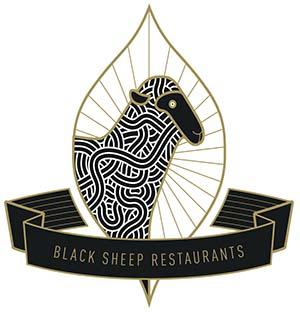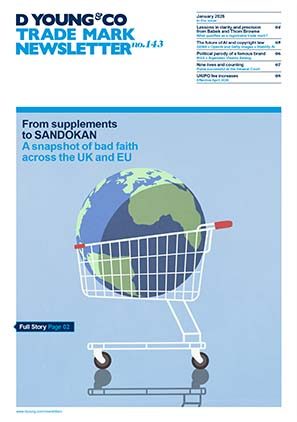Oppositions flock to BLACK SHEEP RESTAURANTS
Black Sheep Restaurants Limited applied to register the figurative EU trade mark shown below, featuring a sheep device above the wording “BLACK SHEEP RESTAURANTS”, for “restaurant services” and “services for providing food and drink” in class 43.

Black Sheep Restaurants received two oppositions against its application, both of which highlight how the EUIPO’s interpretation of the relevant public’s ability to speak the language of the marks is a relevant factor in the likelihood of confusion assessment.
LE MOUTON NOIR
Back in June 2021, the applicant was successful in overcoming an opposition brought by Cherry Tree S.À. R.L. The opposition claimed a likelihood of confusion with earlier French and Benelux national word marks for LE MOUTON NOIR.
In defining the relevant public, the territory or territories in which the earlier right is protected is a relevant factor. In this case, the likelihood of confusion was analysed on the basis of the earlier Benelux mark, which covered identical services and had a wider spectrum of languages to analyse (namely French, German and Dutch) than the French mark (which would be analysed solely from the perspective of the French-speaking public).
As the marks “LE MOUTON NOIR” and “BLACK SHEEP RESTAURANTS” (fig.) were held to be dissimilar visually and phonetically, there had to be some conceptual similarity for there to be any possibility of confusion.
Before reaching a conclusion on conceptual similarity, the EUIPO noted that regardless of whether the Benelux consumer is a French, German or Dutch speaker, the earlier mark “LE MOUTON NOIR” and the element “BLACK SHEEP” in the applied for mark would be considered distinctive, as they held no direct meaning in relation to food and beverage services. Whereas, regardless of whether the Benelux consumer understands English, the element “RESTAURANTS” in the applied for mark would be considered non-distinctive, as RESTAURANTS has the same meaning in French, German and Dutch and is descriptive of the services.
In terms of the distinctive elements of the marks, it was held that only the French-speaking public would understand LE MOUTON NOIR to mean “a black sheep”, whilst only the Dutch-speaking public would understand the English meaning of “BLACK SHEEP” in the application. Therefore, only the French-speaking public would associate the concept of a sheep in LE MOUTON NOIR with the distinctive and dominant sheep device in the application, leading to a below average degree of conceptual similarity for French speakers.
The visual and phonetic differences were deemed to outweigh the conceptual similarities for the French-speaking public, and overall, there was no likelihood of confusion. As the French national mark covered services of lower similarity and would be analysed by the same (French-speaking) public, the opposition remained unsuccessful.
BLACK SHEEP COFFEE
The next opposition reached a decision in October 2021, and was filed by Conilon Limited on the basis of a word EUTM for BLACK SHEEP COFFEE, which covers food, drink and restaurant services in class 43. This time, the opposition was successful on the grounds of a likelihood of confusion.
As in the first opposition, the services were identical. However as one of the earlier marks relied on was an EUTM, the relevant public was the public at large in the EU. The marks were analysed from the perspective of the English-speaking public, which was cited as Ireland and Malta, as well as those with a basic understanding of English, including the Scandinavian countries, the Netherlands and Finland.
The EUIPO held that the English-speaking part of the public would understand the meaning of the common element “BLACK SHEEP” and would consider it to be distinctive of food, drink and restaurant services. For any part of the public that was not English-speaking, the words “BLACK SHEEP” would be meaningless and distinctive.
In relation to the differing elements - “COFFEE” and “RESTAURANTS” - it was noted that these are pronounced like the English words in other EU languages (for example, “café” in French or “Kaffee” in German; and “ristorante” in Italian or “restaurant” in Spanish) and were non-distinctive.
It followed that for food and drink services in particular, the public would seek to designate the establishment by its name, which would be the words “BLACK SHEEP”, and that aurally, most relevant consumers would not pronounce “COFFEE” or “RESTAURANTS”. The marks were therefore held to be visually similar to a below average degree; aurally highly similar or identical; and conceptually highly similar to the English-speaking public, as both marks contain “BLACK SHEEP” in English and the application contains the additional, distinctive sheep device.
Overall, it was held that there was a likelihood of confusion at least for English-speaking consumers. As a likelihood of confusion for only part of the relevant public in the EU is sufficient to reject an application, the opposition was successful.
In short
These cases highlight how the EUIPO’s interpretation of the relevant public’s ability to speak the language of the marks impacts the likelihood of confusion assessment.
Case details at a glance
Jurisdiction: European Union
Decision level: EUIPO
Citations: Oppositions B 3 054 022 and B 3 055 819

